► How the Kia Sportage has changed over three decades
► Meteoric shift for Kia and for SUVs in general
► We drive all five generations
1993 gave us a few excellent things. The word ‘macaron’, Nokia’s first phone with a colour display, Beanie Babies. The highlights are, of course, this writer (born in December 1993) and the Kia Sportage.
The Sportage’s transformation mirrors the meteoric rise of the family SUV and its gradual shift from somewhat agricultural off-roaders to the ubiquitous family cars that dominate the sales charts today. Spanning three decades and five generations, it’s gone from upstart Korean also-ran to one of the most popular cars in the UK, and one that’s easy to recommend with few caveats.
To celebrate its big birthday, Kia invited us to drive all five generations of Sportage back-to-back – in a strange mix of celebratory heritage and gratitude that things have improved for SUV buyers over the last three decades. Or have they just declined for buyers of family hatchbacks as their choice has narrowed and pushed many into SUVs instead? A little from column A, a little from column B…
Kia Sportage Mk1 (1995-2003)
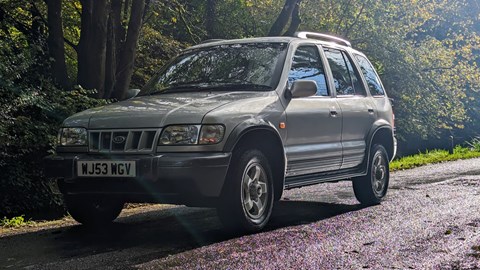
Engine: 2.0-litre four-cylinder petrol, 126bhp, 27mpg, 0-62mph in 14.2s
Pros: Inexpensive off-roader
Cons: Slow, ponderous, cheap inside
The first of three decades was occupied entirely by the first-generation Sportage. First revealed in July 1993, it first hit the UK in 1995.
This is firmly an SUV of a different time. A low-range transfer box sits behind the comically flobbery gearshift, and when you pull down the sunvisor a sticker reminds you that this is a vehicle with a ‘higher rollover risk’ and to ‘avoid abrupt maneuvers’.
The first-gen Sportage was not a huge success. Kia as a manufacturer was still decidedly green, and this awkwardly-proportioned off-roader would do little for sales numbers even in its native South Korea. To drive today, it’s rather charming but only in small quantities. The engine doesn’t have much power anywhere through the rev range, while the steering’s loose and imprecise. Turn on the air-conditioning and acceleration noticeably decreases.
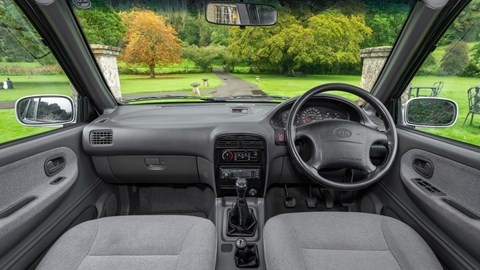
The interior has that heady ‘90s plastic smell, with a veined dashboard, velour seats and glass everywhere. Those thin pillars are largely for show – when Australian NCAP crash-tested the Sportage in 1997, the vehicle structure collapsed and the seatbelts failed.
It’s an interesting history lesson, then, but as a car the Mk1 Sportage was definitely outclassed by other, more mature 4x4s of the time – the Toyota RAV4, the Mitsubishi Shogun Pinin, even the Suzuki Vitara. If you can find one, don’t pay more than a couple of grand – unless you stumble across one of the rare Karmann Sport models, in which case give this writer a call immediately.
Kia Sportage Mk2 (2005-2010)
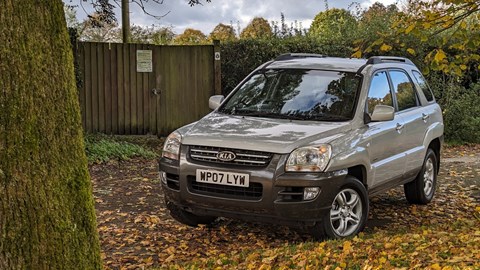
Engine: 2.0-litre four-cylinder diesel, 138bhp, 39mpg, 0-62mph in 11.6s
Pros: Torquey diesel a rare treat, much more grown-up than Mk1
Cons: No longer an off-roader
A two-year hiatus and the Sportage returned as a fully-fledged soft-roader. Gone were the rufty-tufty underpinnings, and it now shared a platform with the Hyundai Elantra. Off-road capability would still shame most 2023 SUVs, but no longer could the Sportage be counted on when the going got mucky.
That had a massive impact on how it tackled the tarmac, though, and indeed how well it sold. In five years on the market Kia sold more than twice as many cars as its predecessor, thanks to generally acceptable driving manners and a good ownership proposition with a long warranty. Crash protection was still a bugbear – the American Insurance Institute for Highway Safety keeps one on display as an example of a weak roof.
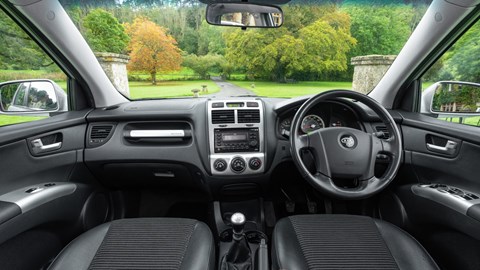
To drive, its diesel engine is torquey, and the six-speed gearbox surprisingly precise. Of course, it rolls like a ship and the steering’s a bit blancmangey, but it’s easy to see why this was a popular model even compared to the Honda CR-V or Nissan Qashqai. Price and aftercare has long been a way that Korean brands gain a foothold in Europe, and it really started to pay off for Kia here.
Kia Sportage Mk3 (2010-2016)
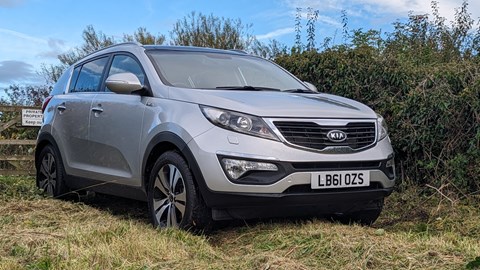
Engine: 2.0-litre petrol, 161bhp, 35mpg, 0-62mph in 10.3s
Pros: The best-looking Sportage, massive upgrade over predecessor
Cons: Bland engines and driving experience
Genuinely smart styling for the time showed that Kia meant business with this car. It’s the first of these Sportages to immediately feel ‘modern’ inside – some of the switchgear is in fact still in use on Hyundai and Kia models today.
Sales again took a huge leap upward, shifting almost 100,000 units in its six years on sale. Rivals included Ford’s Kuga, Volkswagen’s Tiguan and the ever-present Qashqai – crossovers, rather than off-roaders – and for the first time it felt as though Kia could compete on merit instead of just undercutting the competition on price.
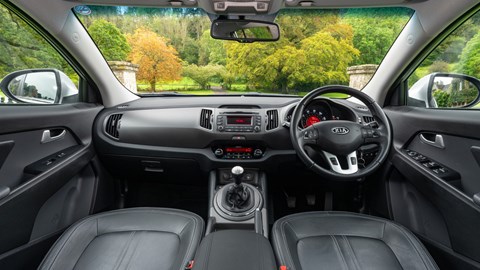
This 2.0-litre nat-asp petrol and its clunky five-speed manual isn’t the best of the available engines – the Sportage at this point still better-suited the 1.7-litre diesel engine, which despite being noisy was efficient, torquey and reliable. No wonder you still see so many Sportages of this era hooked up to caravans.
It’s around this time that the driving experience becomes totally unremarkable, too. Not bad, especially for the time, but totally vanilla – which is sadly what most buyers want from their family SUVs. It does, however, have four-wheel drive, a rare treat in 2023.
Kia Sportage Mk4 (2016-2022)
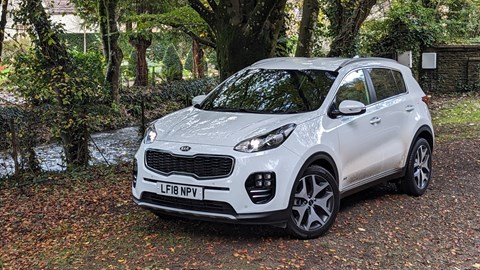
Engine: 1.6-litre turbo petrol, 174bhp, 38mpg, 0-62mph in 8.9s
Pros: Decent to drive, well-built interior
Cons: Not the most efficient
Of the cars represented here this feels the most similar to its predecessor. Sales of this model more than doubled over the Mk3, with nearly 200,000 finding homes in the UK in its six years on sale.
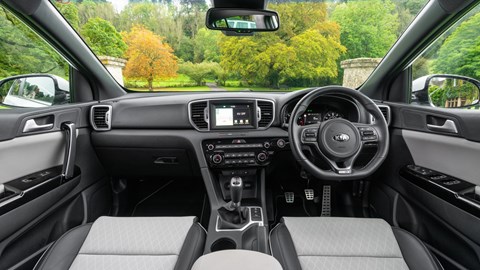
It’s here where Kia’s interior quality, styling and driving experience truly joined up with the European competition. This front-wheel drive 1.6-litre petrol is every bit as competent and boring as the Qashqai, Kuga or Tucson of its time. It’s front-wheel drive, too, an admission that SUVs are no longer any more destined for the path less travelled than any family hatchback.
That, of course, gives you more time to focus on the car’s other worthy features, such as a straightforward infotainment system, spacious interior and plush dashboard.
Kia Sportage Mk5 (2022-present)
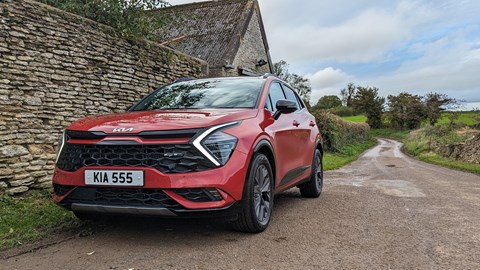
Engine: 1.6-litre petrol hybrid, 226bhp, 49mpg, 0-62mph in 7.7s
Pros: Hybrid engines and advanced interior
Cons: Starting to lose its price advantage
You certainly can’t accuse it of being a shrinking violet. Even a couple of years on front introduction the latest Kia Sportage looks striking, with its insectoid face, trapezoidal motifs and the new, slim interpretation of the ‘Tiger Nose’ grille.
It’s all change inside and under the skin, too. Most Sportages are now hybrid, and the interior’s dominated by screens, representing a shift across the industry to keep these family staples moving along with the times.
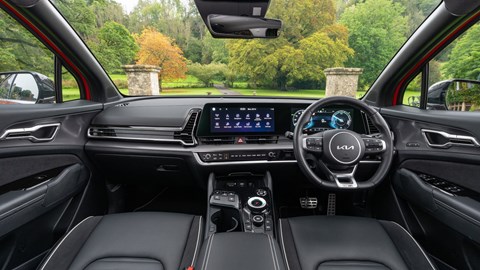
It’s clearly working in this case – the current Sportage is one of the best-selling cars in the UK, and has shifted nearly 60,000 examples in less than two years on sale.
Driven back-to-back with the Mk1, it’s impressive to see how quickly Kia’s evolved, going from a far-east bit player purchased by serious penny-pinchers to a mainstream brand and one of the UK’s biggest sellers. Headline features such as the firm’s impressive seven-year warranty and general good reliability and aftercare has clearly helped. A very visible spell for the Ceed as the ‘Reasonably Priced Car’ on Top Gear can’t have hurt.
At the same time, it’s interesting – and a bit depressing – to see how SUVs on the whole have changed. Once serious off-roaders intended for plying the byways, they now have mass appeal – as evidenced by their meteoric rise in sales. Many manufacturers don’t even sell a ‘traditional’ supermini, family hatch or saloon any more – opting instead for family SUVs of various sizes.
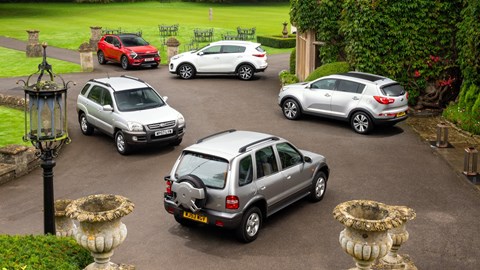
Kia’s certainly guilty of that. Though its Ceed remains on sale – and very good it is too – the Rio supermini and Optima saloon are gone, their gaps filled by the Stonic and Sportage respectively.
Though the latest SUVs are excellent family cars, the idea that a regular runaround can sparkle to drive is rather rapidly dying with these tall, heavy, hybrid machines. There’s potential for some more variety with the move to electric power, though – displayed by the excellent Kia EV6 and its high-performance EV6 GT sibling. The future may yet be bright…